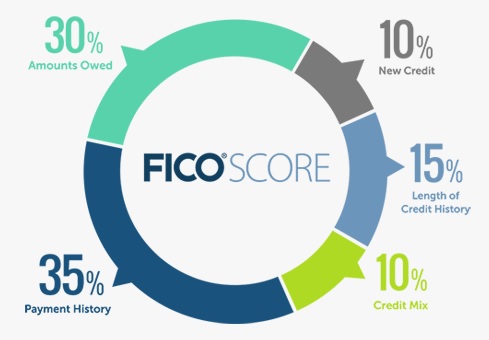
It's a good idea to invest 500 dollars. High-yield savings cards are available from many banks. They offer much higher interest rates and higher yields than average savings accounts. Other banks may require no minimum amount to open a savings account. No matter the type of investment, 500 dollars can help to achieve your financial goals. Here are some ideas for investing your new money. Penny stocks are a great way to begin investing with a little money.
Investing in penny stocks
It can be daunting for novice investors to learn the intricacies involved with penny stock investment. A specific catalyst is needed for penny stocks to rise, and it often takes a lot more hype. This inflated value usually occurs before the company begins to burn money. You should also avoid investing in unsound schemes and stick with diversified index funds. Do not assume that the past performance will be a guarantee of future price appreciation. Only invest if your business is well-informed.

Investing in individual stocks
It can be an excellent way to learn about markets. However, it is important that you have a plan. This involves setting goals, and creating a timeline. By opening a brokerage account, you can invest as low as $500 and purchase fractional shares. Many stocks are volatile, so timing is everything. To diversify your investments, you can choose a mutual fund or exchange-traded fund (ETF).
Investing in small business
There are many methods to invest $500 into a small business. Some of these small businesses require a bigger investment, while others may be possible to start on a tight budget. No matter what reason you have for investing, it is important to always find ways to make your money work harder for you. By following these tips, you can start earning a side income with only a small investment. You can even start your website with your investment.
Investing in an IRA
There are many ways to invest a small amount of money, and one of the easiest ways is to open an IRA. This account allows you to make automatic transfers from your checking account to your savings account. You can choose to invest in CDs and exchange-traded funds. These accounts allow you to invest in multiple investments in one transaction. This makes them attractive for those with low investment amounts.
Investing In An Emergency Fund
If you have a $500 emergency fund, you can invest that money in a variety of ways, such as stocks, bonds, and cryptocurrencies. You can also invest that money in a 401k plan with your employer. If you have a minimum balance of $500, they will match your contributions. You must have strong financial foundation before you invest your emergency fund. This money will be required in an emergency.

Investing in your passion project
While many investments cater to the rich, if you have little money to invest or are on a budget, $500 a month is enough to start building your net worth. Regularly investing in that amount could help you build wealth. Many robo advisors and brokers do not require minimum investment requirements. This allows you to take little to no risk.
FAQ
What kind of investment vehicle should I use?
When it comes to investing, there are two options: stocks or bonds.
Stocks represent ownership in companies. They offer higher returns than bonds, which pay out interest monthly rather than annually.
Stocks are the best way to quickly create wealth.
Bonds are safer investments than stocks, and tend to yield lower yields.
You should also keep in mind that other types of investments exist.
They include real estate, precious metals, art, collectibles, and private businesses.
How can I invest wisely?
An investment plan is essential. It is crucial to understand what you are investing in and how much you will be making back from your investments.
You should also take into consideration the risks and the timeframe you need to achieve your goals.
This will help you determine if you are a good candidate for the investment.
You should not change your investment strategy once you have made a decision.
It is best to only lose what you can afford.
How long does a person take to become financially free?
It all depends on many factors. Some people can be financially independent in one day. Others may take years to reach this point. But no matter how long it takes, there is always a point where you can say, "I am financially free."
The key to achieving your goal is to continue working toward it every day.
What should I look for when choosing a brokerage firm?
You should look at two key things when choosing a broker firm.
-
Fees - How much will you charge per trade?
-
Customer Service - Do you have the ability to provide excellent customer service in case of an emergency?
You want to work with a company that offers great customer service and low prices. This will ensure that you don't regret your choice.
What should I invest in to make money grow?
It's important to know exactly what you intend to do. You can't expect to make money if you don’t know what you want.
Additionally, it is crucial to ensure that you generate income from multiple sources. You can always find another source of income if one fails.
Money does not come to you by accident. It takes planning and hardwork. Plan ahead to reap the benefits later.
Statistics
- 0.25% management fee $0 $500 Free career counseling plus loan discounts with a qualifying deposit Up to 1 year of free management with a qualifying deposit Get a $50 customer bonus when you fund your first taxable Investment Account (nerdwallet.com)
- Over time, the index has returned about 10 percent annually. (bankrate.com)
- Some traders typically risk 2-5% of their capital based on any particular trade. (investopedia.com)
- As a general rule of thumb, you want to aim to invest a total of 10% to 15% of your income each year for retirement — your employer match counts toward that goal. (nerdwallet.com)
External Links
How To
How to save money properly so you can retire early
Retirement planning is when you prepare your finances to live comfortably after you stop working. This is when you decide how much money you will have saved by retirement age (usually 65). Consider how much you would like to spend your retirement money on. This includes hobbies, travel, and health care costs.
You don't always have to do all the work. Financial experts can help you determine the best savings strategy for you. They'll examine your current situation and goals as well as any unique circumstances that could impact your ability to reach your goals.
There are two main types of retirement plans: traditional and Roth. Roth plans allow you put aside post-tax money while traditional retirement plans use pretax funds. It all depends on your preference for higher taxes now, or lower taxes in the future.
Traditional Retirement Plans
A traditional IRA allows pretax income to be contributed to the plan. If you're younger than 50, you can make contributions until 59 1/2 years old. After that, you must start withdrawing funds if you want to keep contributing. After you reach the age of 70 1/2, you cannot contribute to your account.
You might be eligible for a retirement pension if you have already begun saving. The pensions you receive will vary depending on where your work is. Many employers offer match programs that match employee contributions dollar by dollar. Other employers offer defined benefit programs that guarantee a fixed amount of monthly payments.
Roth Retirement Plans
With a Roth IRA, you pay taxes before putting money into the account. After reaching retirement age, you can withdraw your earnings tax-free. However, there may be some restrictions. For example, you cannot take withdrawals for medical expenses.
A 401(k), or another type, is another retirement plan. These benefits may be available through payroll deductions. Extra benefits for employees include employer match programs and payroll deductions.
Plans with 401(k).
Many employers offer 401k plans. You can put money in an account managed by your company with them. Your employer will automatically contribute a portion of every paycheck.
The money you have will continue to grow and you control how it's distributed when you retire. Many people decide to withdraw their entire amount at once. Others distribute the balance over their lifetime.
You can also open other savings accounts
Other types of savings accounts are offered by some companies. TD Ameritrade allows you to open a ShareBuilderAccount. This account allows you to invest in stocks, ETFs and mutual funds. Plus, you can earn interest on all balances.
Ally Bank offers a MySavings Account. This account can be used to deposit cash or checks, as well debit cards, credit cards, and debit cards. You can also transfer money from one account to another or add funds from outside.
What's Next
Once you have decided which savings plan is best for you, you can start investing. Find a reputable firm to invest your money. Ask family members and friends for their experience with recommended firms. Online reviews can provide information about companies.
Next, figure out how much money to save. This step involves determining your net worth. Your net worth includes assets such your home, investments, or retirement accounts. It also includes debts such as those owed to creditors.
Once you know how much money you have, divide that number by 25. This number is the amount of money you will need to save each month in order to reach your goal.
You will need $4,000 to retire when your net worth is $100,000.